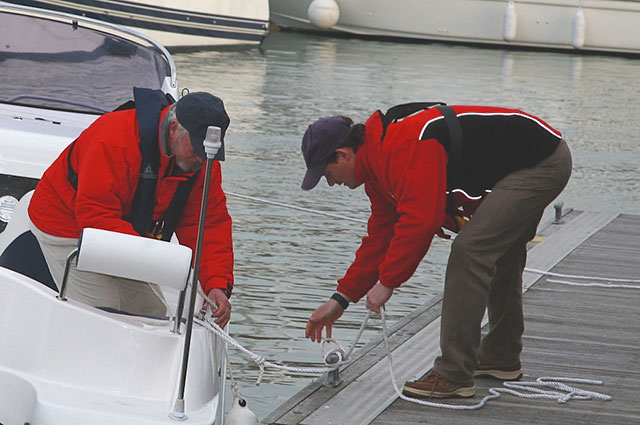Man’s long history of traversing the oceans for trade, exploration and war means that the world’s seabeds are littered with wrecks and treasures. Despite many decades of increasingly active searches for the best, the rarest and the most valuable of them, UNESCO’s figures suggest there are still around three million undiscovered shipwrecks scattered across the globe. To excavate them all would apparently take more than 400 years and uncover treasures worth hundreds of billions of pounds, but as the following discoveries prove, the hidden secrets of the seabed are about much more than just money.

Mel Fisher's amazing 1985 discovery of the Nuestra Senora de Atocha has already revealed over half a billion dollars worth of treasure before the richest part of the ship has even been explored.
In July 1985, after 17 years of exploring the seabed in search of the remains of a 28-strong Spanish fleet beset by a hurricane in 1622, Mel Fisher (pictured above) and his band of treasure hunters finally found the big one. ‘Nuestra Señora de Atocha’ was the largest and most prestigious vessel in the group and when it was holed on the coral off the Florida Keys, it sank with its vast cargo of precious stones, jewellery, gold, silver and tobacco still on board. In fact, the value of this ravaged fleet was so vast that the Spaniards spent a decade attempting to salvage the remains. They brought back a great many of the riches from some of the other ships but the Atocha herself was never found. Since Mel Fisher’s amazing find in 1985, artefacts worth around half a billion US dollars have already been brought to the surface. However, it is far from over. The wreckage site is still being explored and the most valuable part of the ship (the stern castle, where the captain’s cabin would have concealed the most precious cargos of all) has yet to be located.

Divers from the UK's South West Maritime Archaeological Group discovered the wreck of this 3,000-year-old bronze age boat off Salcombe, a town in South Devon. It's one of the world's oldest shipwrecks and many think the 500 artefacts recovered so far represent just the tip of the iceberg.
To most of us, Salcombe is just a small estuary town on the South Devon coast, but in May 2009, it witnessed a find of international importance when divers from the local ‘South West Maritime Archaeological Group’ stumbled upon one of the world’s oldest wrecks. At nearly 3,000 years old, this Bronze Age find is particularly significant, not just because it predates the birth of Christ by a millennium, but because in addition to the weapons and the precious gold jewellery, the raw materials for making bronze (tin and copper ingots) were also found in their hundreds. According to researchers from Oxford University, the implications of this is that trade links between prehistoric Britain and mainland Europe were far better developed than was previously imagined. Nearly 500 artefacts have so far been brought to the surface and examined but there is little doubt that there is plenty more to come…

Carrying 54 metric tons of platinum in its hold the WWII freighter 'Port Nicholson' is estimated to be worth $3billion.
The Port Nicholson was a British World War II freighter torpedoed by a German U-boat 50 miles off the Massachusetts coast in June 1942 while en route from New York to Nova Scotia. It was one of many merchant ships targeted by the Germans, so on the face of it, its sinkage (though tragic) seemed unremarkable. However, when it was rediscovered in 2008, resting at a depth of 200 metres by Greg Brooks from Sub Sea Research in Maine, it was reportedly carrying nearly 54 metric tonnes of platinum. At current market values of around US$1,450 per ounce, that makes it the richest wreck in the world with a value of nearly US$3 Billion. According to Brooks, the precious metal had been intended as a wartime payment from the Soviet Union to the Americans. There are also reports that the ship may have been carrying an additional US$165 million worth of other metals. Certainly, there is some scepticism over the veracity of these claims – and as wartime manifests were either unreliable or deliberately falsified, that doubt persists. But claims on the prize, from the British, who owned the ship, from the Americans, who were destined for the payment, and from the Russians who made good the original payment are likely to delay any definitive answers.

A priceless artefact discovered aboard a Roman wreck off the Greek island of Antikythera: 'The Mechanism' is believed to have been a sort of computer to aid prediction of lunar eclipses.
In 1901, sponge divers off the Greek island of Antikythera in Greece, discovered a Roman wreck containing treasure plundered from across ancient Greece. The seabed exploration that followed is broadly considered to have been the world’s first major subsurface archaeological expedition and it proves that the importance of an object can far outweigh its monetary value. The treasures included coins, jewels, statues, glassware and pottery – but the real highlight of the wreck, unearthed in 1976 is known as the ‘Antikythera Mechanism’. Dating from the second century BC, it is thought to be the world’s first analogue computer and the brainchild of mathematician, philosopher and inventor, Archimedes. It is apparently designed to simulate planetary movements and thereby predict lunar eclipses - and x-rays have shown that, with 50 or 60 gears, its astonishing complexity and sophistication is unlike anything that the world would see for another 1,000 years. The assembled collection of Antikythera artefacts can be viewed at the National Archaeological Museum in Greece.

A tiny fraction of the total haul of treasure recovered from the wreck of the infamous pirate vessel 'Whydah' off the coast of Cape Cod.
In 1984, explorer Barry Clifford discovered a shipwreck on the seabed off Cape Cod that would go down in history. He had unearthed the Whydah – a complete pirate ship and to date the world’s most famous relic of the heavily romanticised ‘golden age’ of piracy. Having started life in 1715 as a slave ship in London, her speed, maneuverability and heavy armaments made her a very natural target for roaming pirates. In the event, she was captured by Black Sam Bellamy in the West Indies and although she would sink just 18 months later, her prolific pirate skipper would have plenty of time to amass a vast hoard of booty. Since her discovery, more than 200,000 artefacts have been recovered from the site, with everything from gold and silver coins to swords and pistols, plus valuable African jewellery and a range of personal belongings and seamanship artefacts. With the discovery estimated to be worth in the region of half a billion US dollars, it’s a story that the National Geographic Society has brought to life in spectacular fashion with its ‘Real Pirates’ exhibition. See
www.whydah.com for more.
For more features about on-the-water opulence, see:
Oyster 885: The Yacht that Eddie Jordan Chose;
Eye Candy at the Loro Piana Superyacht Regatta and
The Most Beautiful Yachts in the Solent








